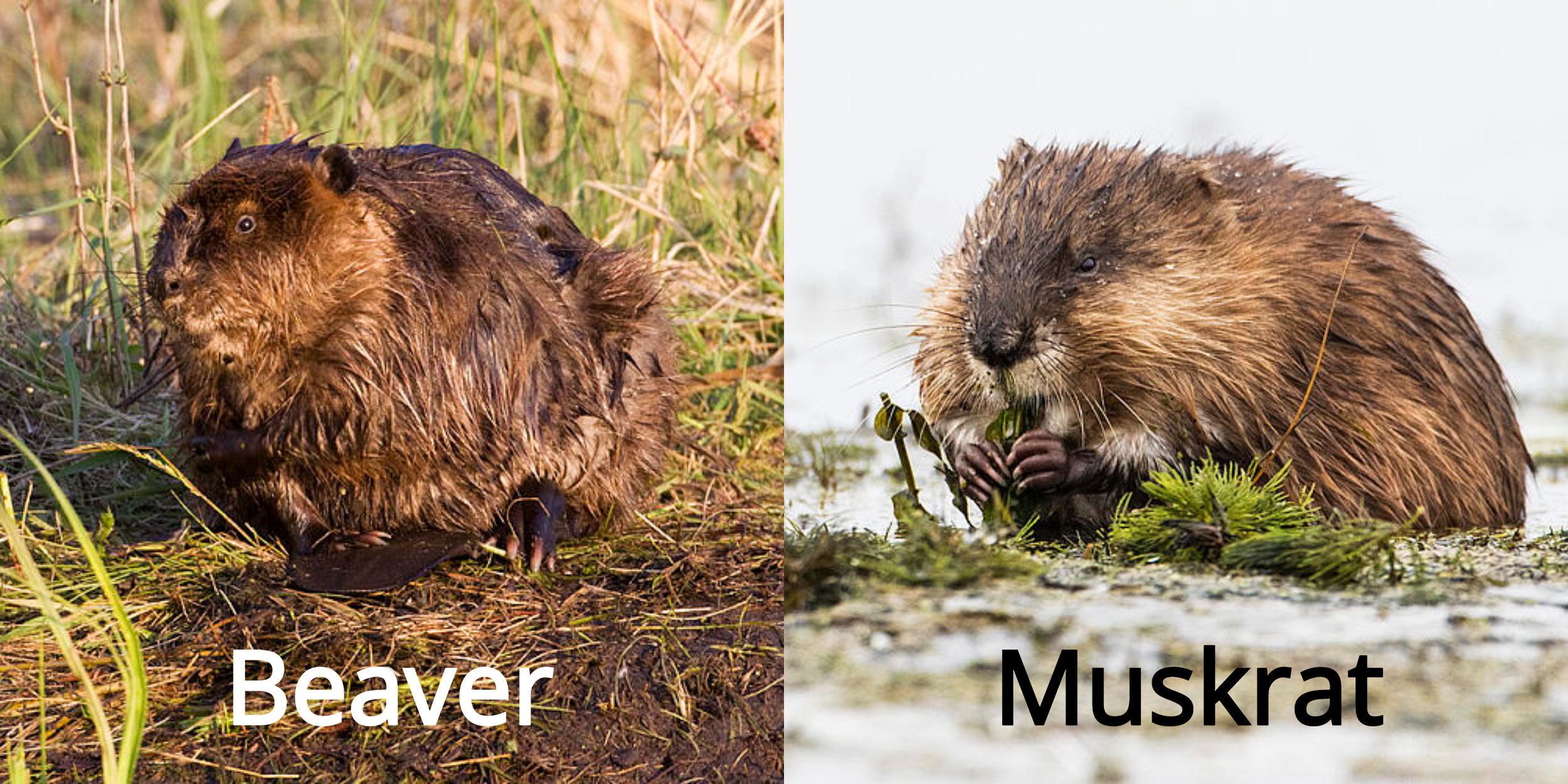Learn the difference between these two aquatic mammals!
Beavers and muskrats look very similar. They are both large, furry rodents that swim in the water and eat the surrounding vegetation. So, how can you tell them apart? The main difference between these two species is their tails. Muskrats have a long, thin tail like a mouse, whereas beavers have a wide, flattened tail like a paddle.
Photos by Gerald Romanchuk
Beaver (Castor canadensis)
Photo by Gerald Romanchuk
Beavers are North America’s largest rodent! While they are quite slow on land, they are quick and powerful once they get into the water. They have many adaptations for swimming, including transparent membranes to protect their eyes underwater, nostrils and ears that close while swimming, and webbed feet to help them move around.
There are many clues that might tell you if there is a beaver in the area, including constructed beaver lodges, beaver dams, teeth marks on tree stumps where a beaver chewed the tree down, pathways leading to the water where the beaver may have dragged the tree, or large webbed feet tracks.
Beavers are much larger than muskrats! Beavers weigh between 30 and 70 pounds, whereas a muskrat only weigh between 2 and 4 pounds. Though, this isn’t always obvious, especially when the animal is far away or in the water. So, checking to see whether the tail is long and narrow or wide and flat will tell you right away which is which.
Muskrat (Ondatra zibethicus)
Photo by Gerald Romanchuk
Muskrats get their name because they have musk glands that release a pungent substance. This musky fluid is thought to be used to mark territory and communicate with other muskrats during breeding season.
Muskrats generally live in the same sorts of areas that beavers do, including marshes and slow-moving streams. They normally eat cattails and other aquatic plants, but they are omnivorous and will eat fish or small mammals when plants are in low supply.
Unlike beavers, muskrats do not have webbed feet. They do have adaptations to live in the water, though. They have waterproof fur and are able to close their lips behind their teeth to chew without swallowing water. They generally create lodges for themselves using decayed plant matter, but have also been known to sometimes take shelter in beaver lodges.
Swimming Rodents
Photos by Gerald Romanchuk
It can be difficult to tell the two species apart when they are swimming because they have such a similar looking face. But, a tell-tale sign that you are looking at a muskrat is that you can see its long thin tail above the surface of the water. When beavers swim, their tail is generally under the water and not visible.
Now that you have a better idea of the differences between beavers and muskrats, it’s time to go out to a wetland and try to spot and identify each one on your own!




